Do you consider your packaging to be a part of the product, protecting its contents and framing its on-shelf life? Or do you consider it to be an integral part of your connection with your customers at an important moment of truth, that of purchase and usage? Or both of these?
If you answered both, then I believe that you are making maximum use of your packaging or at least you recognise its potential for communicating.
If you answered only one of the choices, then you may be missing an important opportunity. Let me explain, with a few examples.
People don’t read instructions
We all expect most things that we use or consume to be intuitive these days. In other words, we assume that we will understand how to build / cook / use them without reading the manual / instructions.
If you are like most people – myself included – this has nothing to do with the complexity of the product concerned. I myself will only turn to the instructions when something doesn’t work: I end up with left-over screws when mounting a flat-pack piece of furniture, or I can’t achieve multi-recordings on my smart TV or cable box.
In the article How Likely Are You to Read the Instructions they link behaviour to personality types. It makes an interesting read and offers at least some explanations as to why many (most?) of us still don’t read instructions.
Since the internet arrived, we have access to more and more information, and yet we seem to be reading less and less. Therefore as marketers, we need to ensure that any vital information we want to share, is clearly highlighted on the pack.
People do look at packs
Whether it is the cream we put on our faces, the cereal we eat for breakfast, or the dip that we offer to friends on match night, there are moments when we are faced with packaging for more than a split second. It is at these times that we are likely to read at least some of what is written on the pack.
It therefore makes sense to provide more than just a list of ingredients. After all you have your customer’s attention, so make use of it to impress or educate.
Here are a few of the best examples I have come across:
Nestlé does a great job of providing useful information on their pack,s with their “nutritional compass.” This includes four different pieces of information: good to know, good to remember, good question and the nutritional data.
What I particularly like about what Nestle has done, is to combine mandatory information on nutritional values, with useful information for the consumer. Although they may not be the most consumer centric company around, at least they did think consumer first in the development of their “compass.”
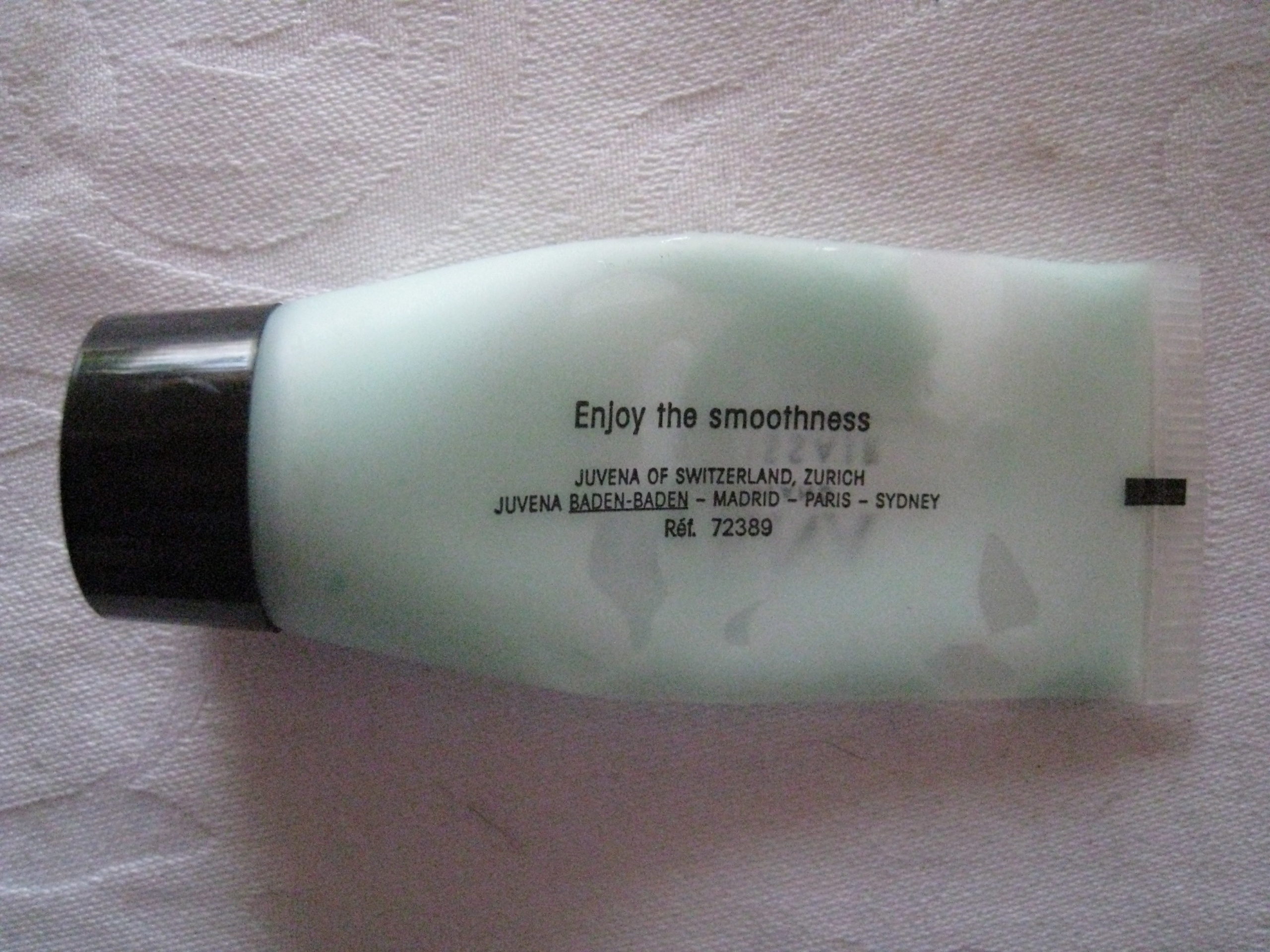 Juvena of Switzerland: The short message to “Enjoy the smoothness” on the back of the Juvena hand cream sample tube, makes the experience both more enjoyable and more useful in clearly communicating its benefits.
Juvena of Switzerland: The short message to “Enjoy the smoothness” on the back of the Juvena hand cream sample tube, makes the experience both more enjoyable and more useful in clearly communicating its benefits.
Users will almost certainly check out the promised as they apply it, bringing to their attention an advantage that might otherwise have gone unnoticed. Very clever and an excellent example of on-pack communication.
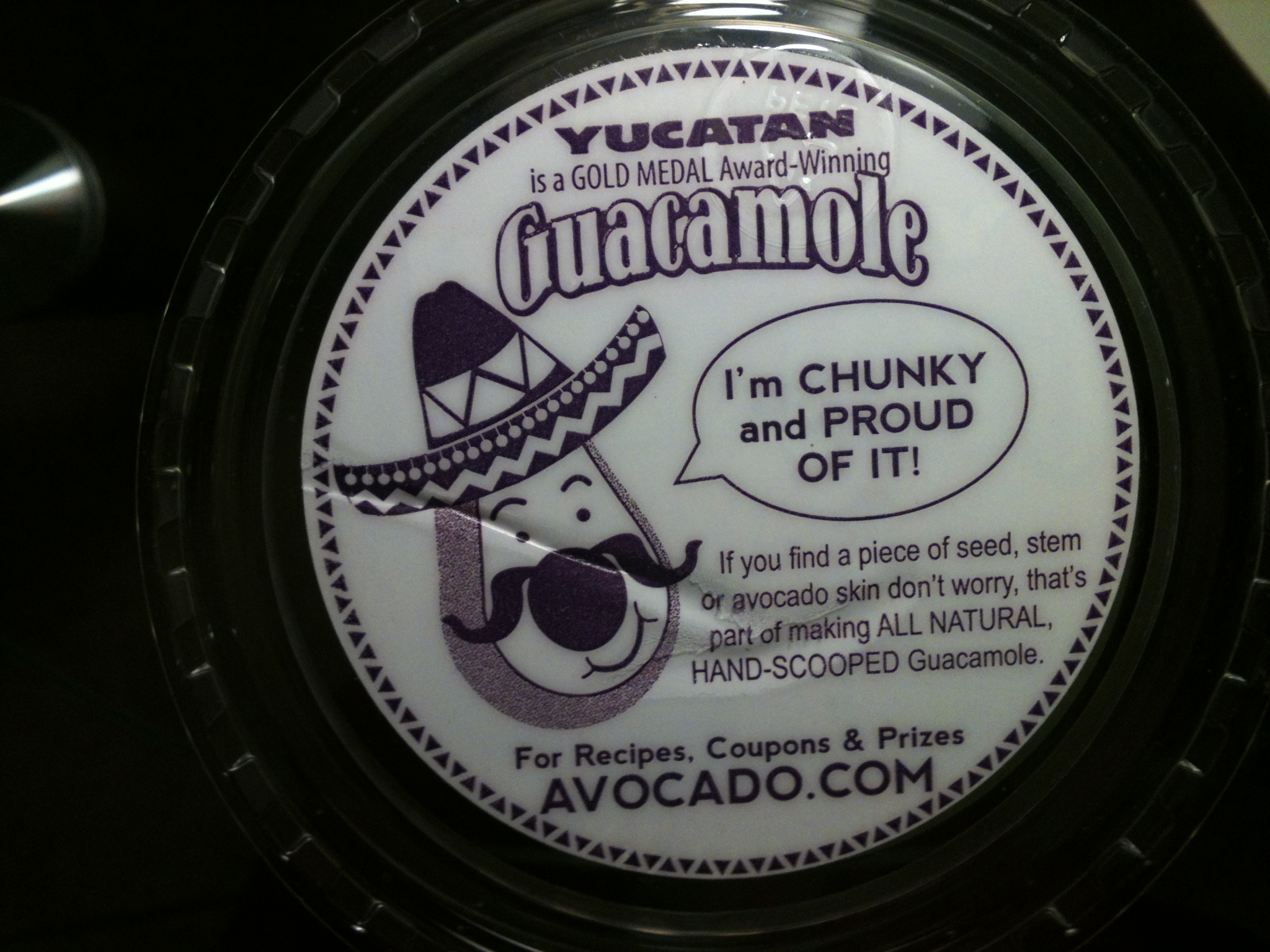 Yucatan Guacamole: I love Mexican food and especially guacamole. The message I discovered on the inside of a tub I bought in the US, made me smile.
Yucatan Guacamole: I love Mexican food and especially guacamole. The message I discovered on the inside of a tub I bought in the US, made me smile.
The manufacturer has turned what could have been perceived as a negative – finding a piece of seed, stem or skin – into a healthy positive. I just love that.
While you may have to click on the image on the right to be able to read all of the message, their website is very clear. Now that’s what I call impact!
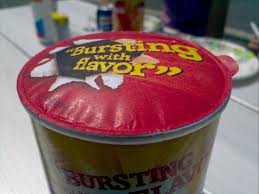 Pringles have done something similar with their “Bursting with flavour” message. Again it explains what some might have perceived as a negative – the bulging top – into a positive.
Pringles have done something similar with their “Bursting with flavour” message. Again it explains what some might have perceived as a negative – the bulging top – into a positive.
They used to put this only on the inside seal, but they have obviously understood the power of this message since they have now added it to the front of the pack as well, as the photo on the left shows.
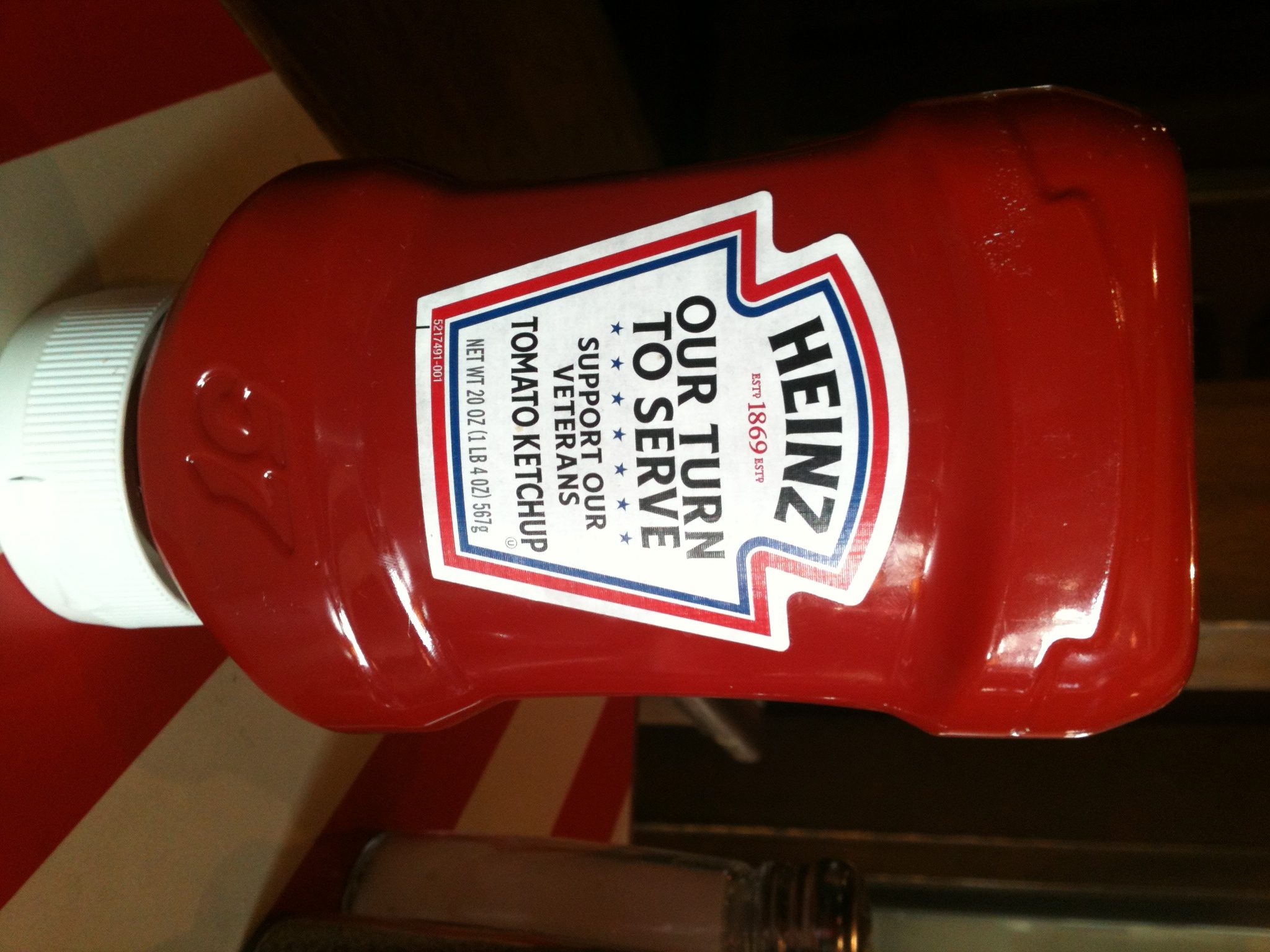 Heinz Tomato Ketchup: Another food example, also from my trips to the US, is a ketchup bottle that had a very important message on front of pack, as you can see from the photo on the right.
Heinz Tomato Ketchup: Another food example, also from my trips to the US, is a ketchup bottle that had a very important message on front of pack, as you can see from the photo on the right.
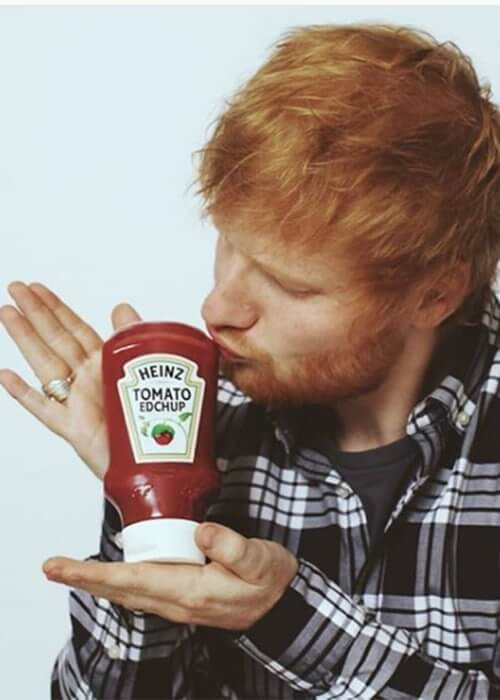 Heinz now uses their front label to announce many of their initiatives and promotions. It has become something that consumers are used to seeing – and reading.
Heinz now uses their front label to announce many of their initiatives and promotions. It has become something that consumers are used to seeing – and reading.
A fun campaign they started running in 2019 with Ed Sheeran includes a pack label change of course, from Tomato Ketchup to Edchup!
The accompanying TVC ad shows Sheeran adding ketchup to a dish in an exclusive restaurant. While it is funny, I am not sure the anguish many will feel watching it is positive. What do you think?
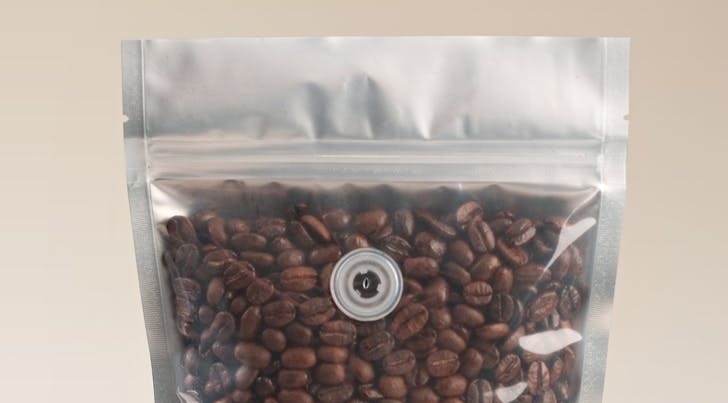 Ground Coffee: Ground coffee packs have started using valves to enable potential purchasers to smell the coffee before they buy it. This reminds me of the scratch patches that appeared on household and some personal care products in the nineties.
Ground Coffee: Ground coffee packs have started using valves to enable potential purchasers to smell the coffee before they buy it. This reminds me of the scratch patches that appeared on household and some personal care products in the nineties.
All these ideas recognise the importance of the perfume or aroma of their product to their customers and thus help attracting hesitant purchasers to buy.
Although not an example of communicating by text, it is still getting the message across to the consumer, this time by using aroma.
These are just six examples of companies using their packaging more creatively. There are many others. If you have a favourite example then please share it in the comments below.
If you’re not confident that your packs are optimised to connect with your customers, why not get us to run a pack audit? We will review all your packs and discuss how you can make them more customer centric. Communicating with your customers when they have time to listen, as they use your product, is one of the most effective and under-utilised channels.
People are willing to help you
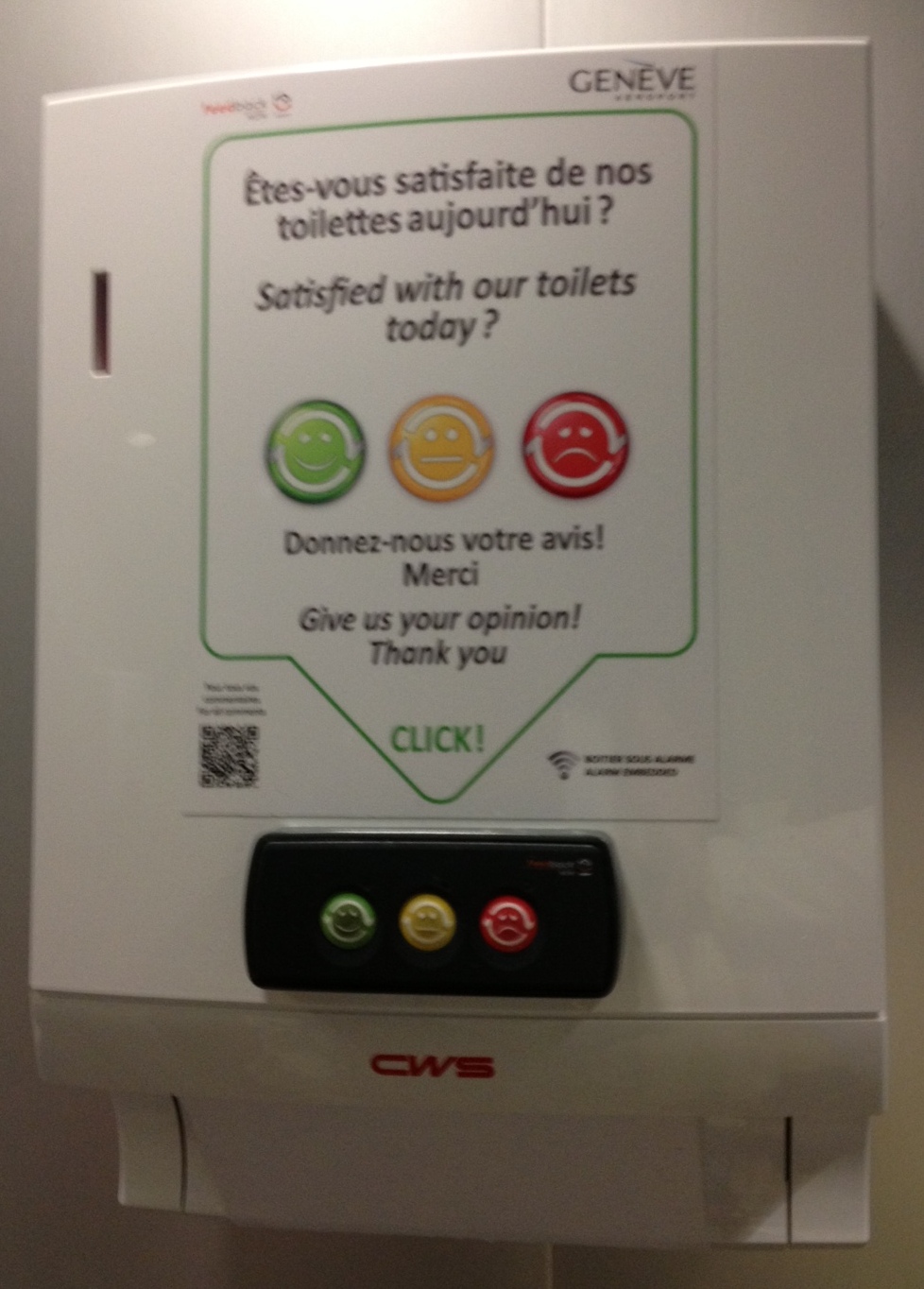 Creative messaging needn’t be limited to packaging of course. I first came across this incredibly simple solution for gathering customer feedback in a Geneva airport toilet (restroom).
Creative messaging needn’t be limited to packaging of course. I first came across this incredibly simple solution for gathering customer feedback in a Geneva airport toilet (restroom).
That was almost ten years ago, and these smiley feedback button terminals seem to be popping up everywhere these days, including airport security, retail and restaurants.
Now while some may criticise the idea because feedback requires context, it is said that a single “Happy or Not” terminal can register thousands of votes a day. Because it takes little time, doesn’t involve a questionnaire or signup, it is essentially a “frictionless” experience for the customer. As a result, it attracts opinions from people of all different backgrounds, and can also be analysed in real-time.
The appearance of such terminals has become so commonplace, it shows how instant customer feedback has become a necessity in so many industries.
What I like about it, is the terminal’s simplicity, it’s fun look, and its lack of invasion of customer’s time in providing their feedback.
Our customers’ time is valuable and we should respect it. In return, the information we provide to them must be relevant and useful; something they would like to know, not (just) something we want to tell them.
We also need to be careful to connect only when invited. If we’re not, then we need to find other ways to provide information that a customer can access when they want it. This is why social media has become such an important element of the communications plan. However, packaging has not, as yet, met with the same level of consideration.
Our customers’ attention is constantly pulled in all directions today, with thousands of messages pushed at them, from so many channels. Capturing their attention is more likely to be successful when they are open to learning about your product, that is to say when they are buying or actually using it. It therefore makes good business sense to use packaging more creatively; wouldn’t you agree?
I’d like to finish with a suggestion of a fun exercise you can do both alone or as a team. Have a look at your packs right now and assume the only things you know about the brand are from this. What conclusions would you draw from it?
For more information on the support we can provide in product innovation and branding, please check out our website here: https://bit.ly/3Q6OIYz
This is a cornerstone post and is regularly updated and expanded from the original published on C3Centricity.












